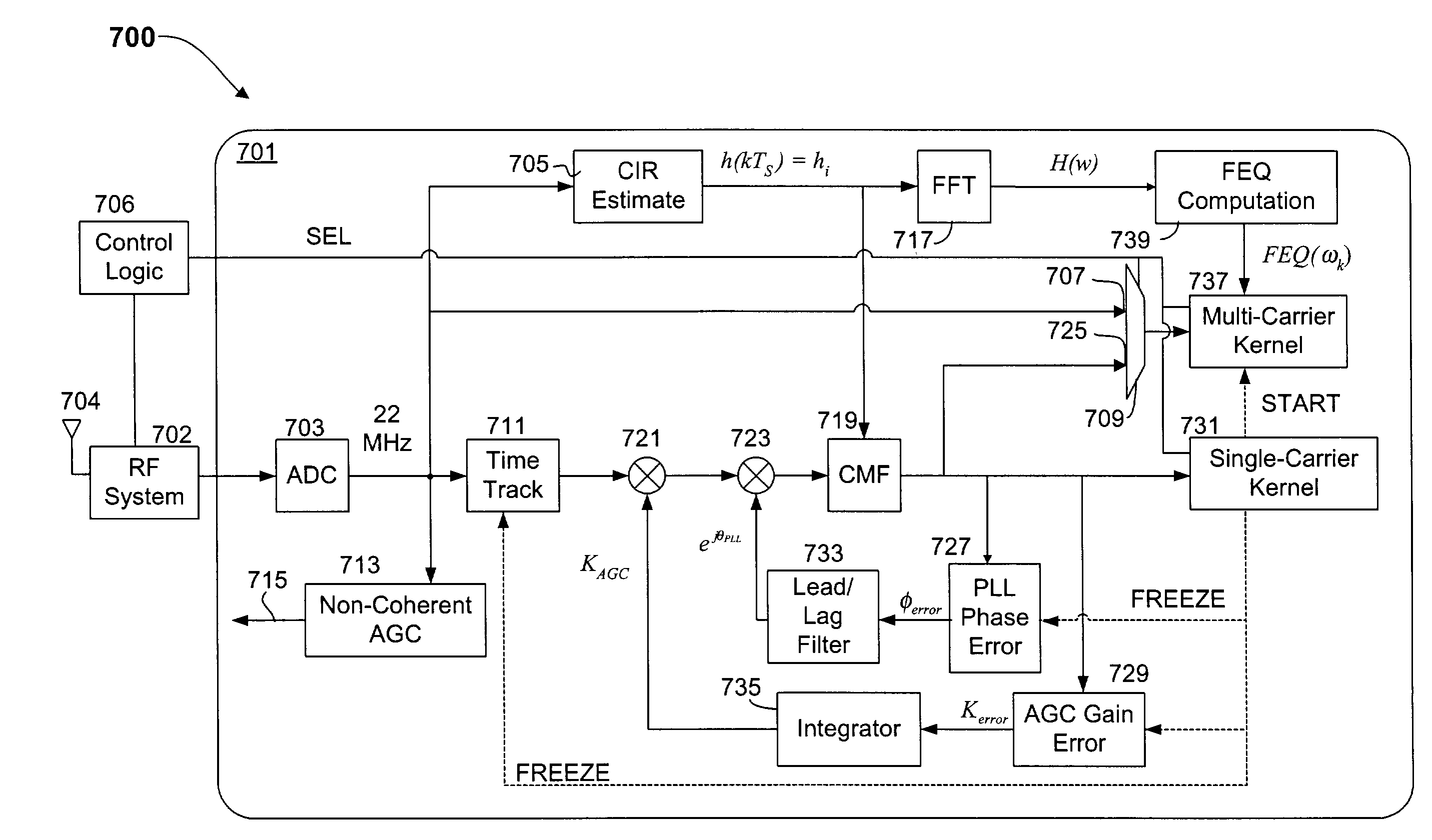Single-carrier to multi-carrier wireless architecture
a wireless communication and single-carrier technology, applied in the field of single-carrier to multi-carrier wireless architecture, wireless communication architecture, etc., can solve the problems of incompatibility and inability to work together of systems implemented according to the 802.11a and 802.11b standards, multi-path distortion, and impairment of wireless communications, including wlans
- Summary
- Abstract
- Description
- Claims
- Application Information
AI Technical Summary
Benefits of technology
Problems solved by technology
Method used
Image
Examples
Embodiment Construction
[0034]A Baseband transmitter and receiver architecture according to one embodiment of the present invention achieves coherency across the single-carrier to multi-carrier transition by maintaining gain, phase, frequency, sample timing and Channel Impulse Response (CIR) from the single-carrier signal to the multi-carrier signal of a mixed carrier signal. In this manner, the signal does not have to be reacquired by the multi-carrier portion of the receiver since the information developed during the single-carrier portion is valid and used to initiate capture of the multi-carrier portion. Maintaining and accumulating information makes the signal much more robust in the face of common interferences experienced in wireless communications. A Baseband receiver architecture according to an alternative embodiment is also described that does not preserve the coherency across the transition, so that the multi-carrier portion of the receiver must completely re-acquire the signal after the transi...
PUM
 Login to View More
Login to View More Abstract
Description
Claims
Application Information
 Login to View More
Login to View More - R&D
- Intellectual Property
- Life Sciences
- Materials
- Tech Scout
- Unparalleled Data Quality
- Higher Quality Content
- 60% Fewer Hallucinations
Browse by: Latest US Patents, China's latest patents, Technical Efficacy Thesaurus, Application Domain, Technology Topic, Popular Technical Reports.
© 2025 PatSnap. All rights reserved.Legal|Privacy policy|Modern Slavery Act Transparency Statement|Sitemap|About US| Contact US: help@patsnap.com



